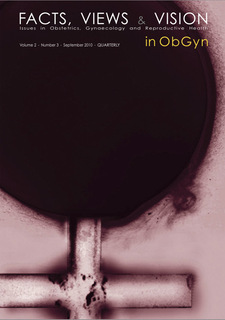Reproductive efficiency of human oocytes fertilized in vitro
controlled ovarian hyperstimulation, cryopreservation, IVF, oocyte utilization, reproductive efficiency
Published online: Oct 05 2010
Abstract
Some sort of infertility treatments, including the use of advanced reproductive technologies (ARTs), is nowadays pro- vided at several places in sub-Saharan Africa. Yet, to date only a few studies have actually looked into the way these treatments are offered, used and experienced. In this review article the authors present and discuss empirical study findings that give insight into the way biomedical infertility care is provided, considered, experienced and/or used in sub-Saharan African countries. They concentrate on four themes that were often referred to in the reviewed studies and underline the importance of taking into account the local sociocultural context and notions when developing and implementing infertility care, namely: counselling, male involvement, acceptability of ARTs and the use of donor ma- terial (semen and embryos). In the conclusion the authors emphasize the importance of preventing infertility as part of integrated reproductive health programs and the need to improve the quality of (low tech) infertility care in the public health sector by means of standardized guidelines, training of health staff and improved counselling. In addition, from a reproductive rights perspective, they support initiatives to introduce low cost ARTs to treat tubal factor related infer- tility. They also point to potential unintended side effects of the introduction of ARTs and the use of donor material in the sub-Saharan African context, affecting gender inequity and inequity between citizens from different social classes, and argue that such effects should be acknowledged and avoided by all possible means. Finally, they present an agenda for future social science research on this topic in sub-Saharan Africa.



